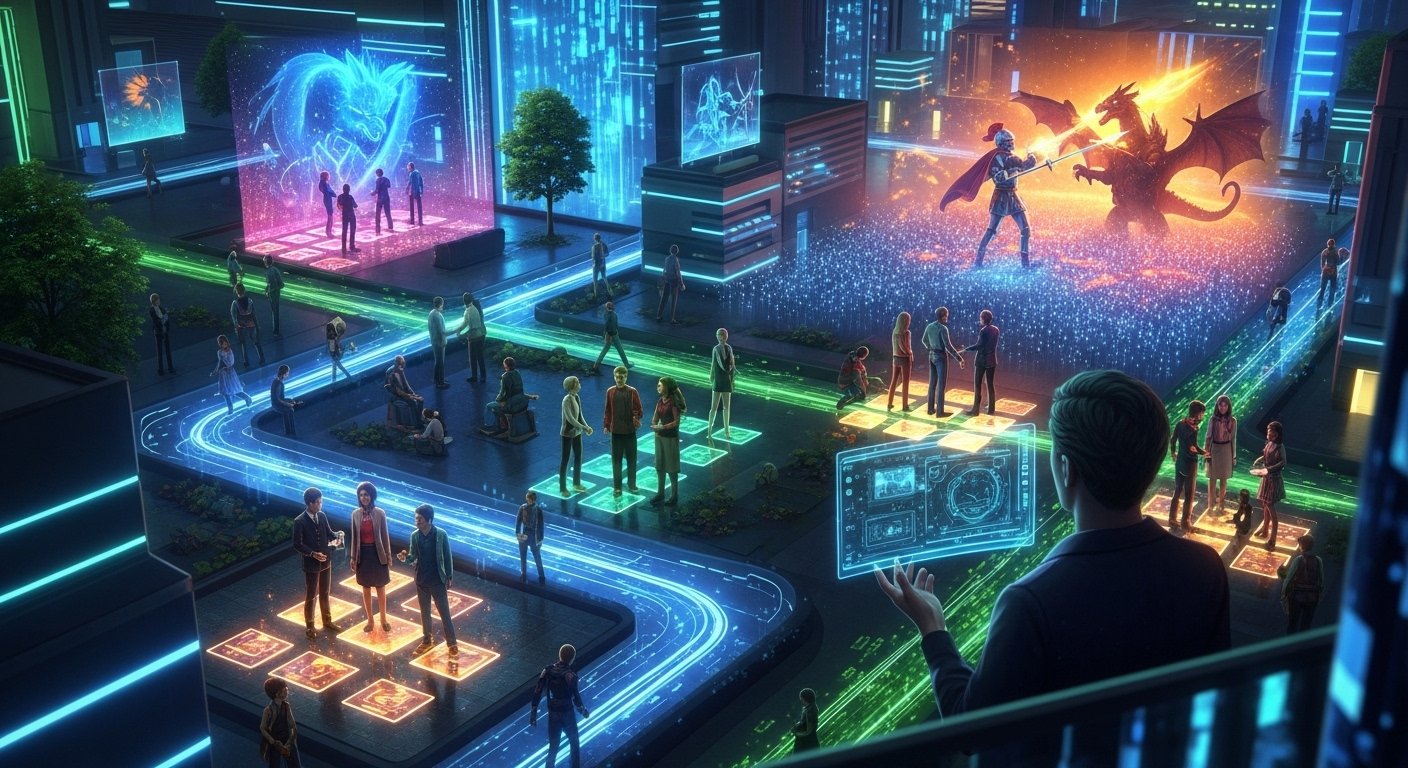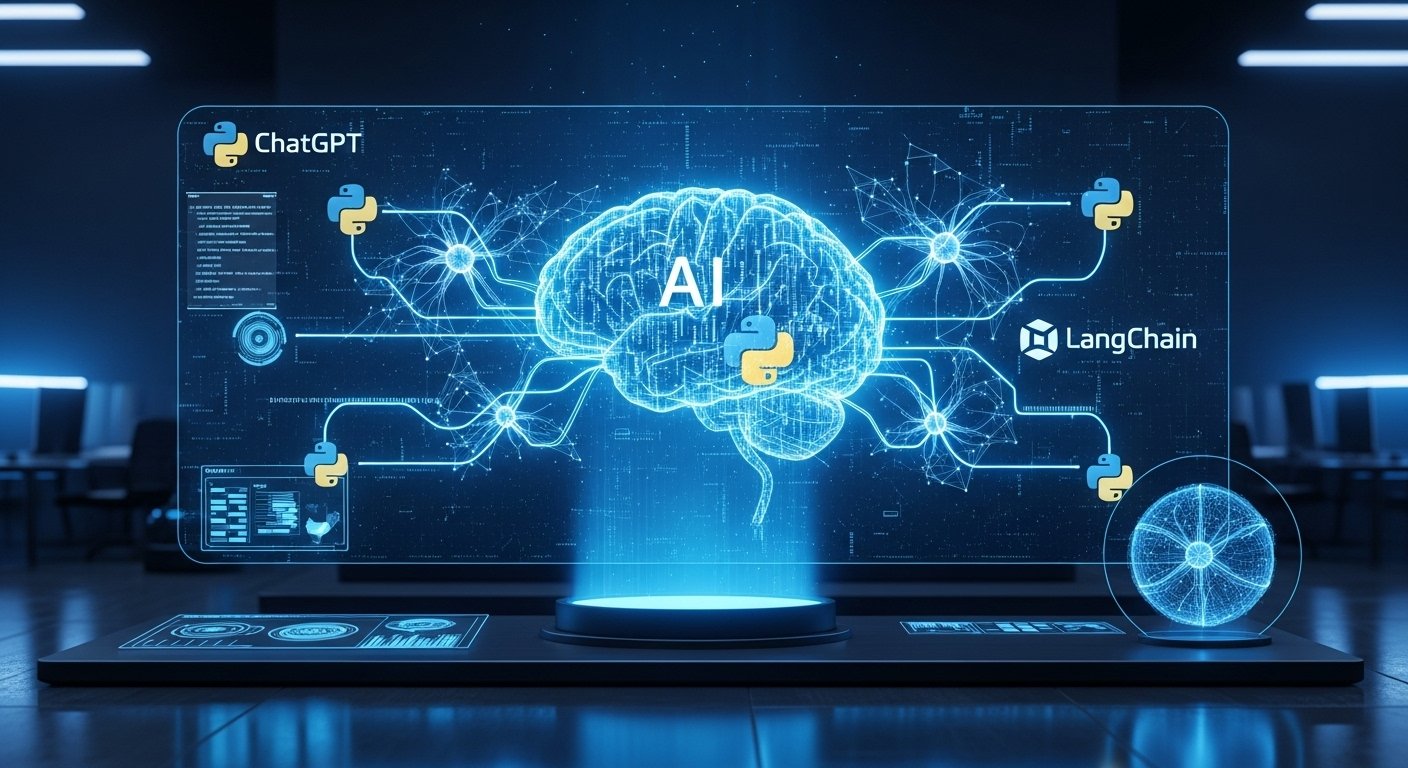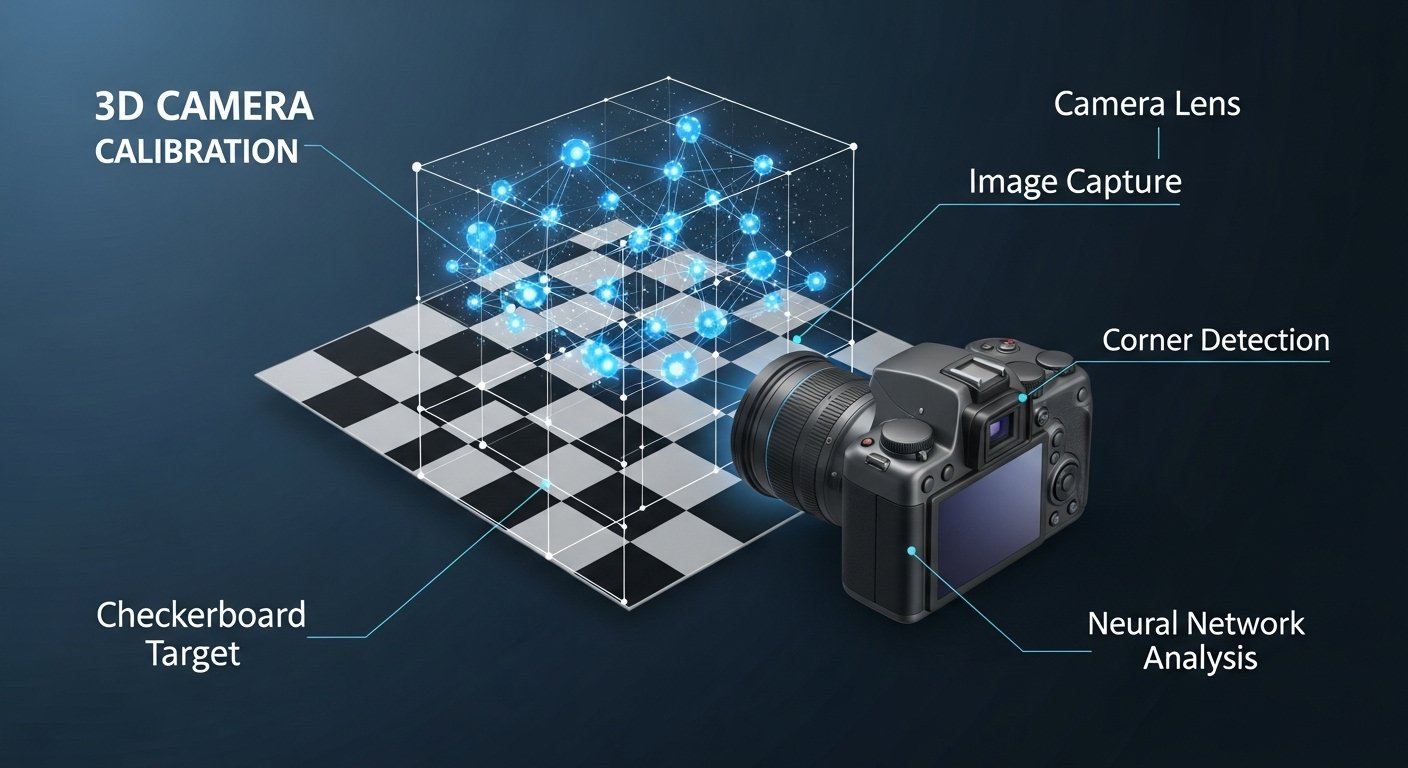Artificial intelligence has evolved from simple automation to a powerful creative force capable of writing scripts, designing worlds, and animating lifelike characters. At the forefront of this transformation stands Fable Studio, a visionary company pioneering “generative storytelling” — where AI doesn’t just assist but co-creates.
The term “Fable Generative AI Engineer” refers to a new breed of AI professional who designs, builds, and refines the intelligent systems that power Fable’s simulated worlds and storytelling engines. These engineers merge creativity with deep technical expertise to give birth to digital beings that feel alive.
In an age where entertainment, gaming, and AI are colliding, understanding this role isn’t just interesting — it’s essential. Let’s dive deep into what it means to be a Fable Generative AI Engineer, how it works, and why this field could define the next decade of creative technology.
What Is Fable and Why It Matters
The Vision Behind Fable Studio
Founded by Edward Saatchi and Pete Billington, Fable Studio emerged from Oculus Story Studio with a mission to push storytelling beyond human imagination. Their vision? To create AI characters and worlds that think, feel, and evolve — not just pre-programmed NPCs, but self-directed agents capable of interacting with people naturally.
Fable gained attention for its SHOW-1 model, also known as The Showrunner AI, which can generate entire animated TV episodes from a single prompt. It uses multi-agent systems — groups of AI “characters” that write scripts, act, and direct — all autonomously.
This makes Fable one of the first companies to treat AI as a creative collaborator, not just a tool.
Who Is a Fable Generative AI Engineer?
A Bridge Between Art and Algorithm
A Fable Generative AI Engineer is both an AI architect and a storyteller. They combine machine learning, data science, and creative design to bring autonomous virtual beings to life.
They don’t just build models — they design personalities, simulate emotions, and code behavior loops that mimic human intelligence. In short, they make AI characters believable and engaging.
Key Responsibilities
Here’s what a typical day might look like for a Fable Generative AI Engineer:
-
Design and train generative models (e.g., LLMs, diffusion models) for dialogue, storytelling, and world-building.
-
Develop multi-agent systems that allow AI characters to interact, learn, and evolve dynamically.
-
Collaborate with artists, writers, and directors to align AI-generated outputs with creative goals.
-
Build memory systems and personality databases to make characters consistent across interactions.
-
Integrate AI pipelines into simulation engines and 3D environments.
-
Test and optimize performance for real-time generative content.
This unique blend of art and AI engineering makes the role one of the most exciting in the tech world today.
The Technology Behind Fable’s Generative Systems
1. Large Language Models (LLMs)
Fable engineers work with cutting-edge language models (like GPT-4 or custom-trained models) that can:
-
Write scripts, dialogue, and narration.
-
Simulate conversations between characters.
-
Interpret and respond to user input in real time.
These models form the brain of Fable’s AI characters.
2. Multi-Agent Architecture
Instead of relying on a single AI model, Fable uses multiple specialized agents that collaborate — similar to how a film crew works.
-
One agent might be a writer generating scripts.
-
Another might act as a director refining story structure.
-
Others might serve as actors or editors to finalize tone and visuals.
This distributed system creates richer, more coherent content — and it’s where Fable’s engineers truly innovate.
3. Simulation and World Models
Fable’s “Simulation” project creates living virtual worlds where AI characters interact autonomously. Engineers design simulation engines that manage:
-
Spatial awareness
-
Emotional states
-
Decision-making trees
-
Dynamic memory systems
This transforms static animation into a dynamic, evolving digital ecosystem.
4. Generative Graphics and Animation
Beyond text, Fable engineers also integrate image and animation generation — using diffusion models and 3D rendering AI to visualize characters and scenes in real time.
Imagine typing: “Generate a scene where two AI characters argue in a futuristic café.” Within seconds, the system produces dialogue, animation, and mood lighting — all driven by generative AI.
Skills and Tools Required for a Fable Generative AI Engineer
To succeed in this field, you’ll need both technical mastery and creative intuition. Here’s a breakdown of the essential skills:
Technical Skills
-
Python, PyTorch, TensorFlow – For model training and deployment
-
LLM APIs (OpenAI, Anthropic, Mistral, etc.)
-
Knowledge of RAG (Retrieval-Augmented Generation)
-
Multi-Agent Frameworks (LangChain, AutoGen, CrewAI)
-
Database Systems (PostgreSQL, vector databases like Pinecone or FAISS)
-
Game Engines / 3D Simulation Tools (Unity, Unreal Engine, Blender)
-
Prompt Engineering & Fine-tuning Techniques
Creative and Cognitive Skills
-
Understanding of story arcs, character psychology, and dialogue flow
-
Ability to collaborate with creative teams (writers, animators, directors)
-
Critical thinking to make AI outputs logical, emotional, and entertaining
-
Problem-solving with a focus on realism and immersion
Soft Skills
-
Cross-functional communication
-
Experimentation and curiosity
-
Ethical understanding of AI-generated content
Real-World Applications of Fable’s Generative AI
The technology developed by Fable and its engineers goes far beyond entertainment. Here are real-world applications across industries:
1. Film and TV Production
Fable’s SHOW-1 AI can generate story ideas, scripts, and even entire animated episodes. This democratizes filmmaking by allowing small studios or creators to produce cinematic content at scale.
2. Gaming
Imagine games where NPCs (non-player characters) have evolving personalities and memories. Fable’s simulations could redefine open-world gaming by creating authentic, intelligent characters that remember your actions and adapt over time.
3. Virtual Companions and Therapy
Generative AI engineers at Fable are exploring emotionally intelligent AI companions that can support users in therapeutic or educational contexts.
4. Metaverse and Virtual Worlds
Fable’s “Simulation” technology can populate virtual spaces with self-aware entities, creating living worlds for social, commercial, or creative purposes.
The Ethical Side of Generative AI Engineering
With great innovation comes great responsibility. Fable’s engineers face ethical challenges around:
-
AI Bias and Fairness: Ensuring generative outputs don’t reinforce stereotypes.
-
Ownership and Credit: Who owns AI-created stories or art?
-
Emotional Impact: Designing AI characters that don’t manipulate human emotions unethically.
-
Transparency: Making sure users understand when they’re interacting with AI.
Fable promotes responsible AI by integrating human oversight, transparent disclosure, and bias mitigation tools throughout its development process.
How to Become a Fable Generative AI Engineer
If you’re inspired to pursue this futuristic career, here’s a roadmap:
1. Build a Strong Foundation in AI
Learn the fundamentals of:
-
Machine learning (supervised, unsupervised, RL)
-
Natural Language Processing (transformers, embeddings, etc.)
-
Computer vision and diffusion models
Online courses on Coursera, Fast.ai, or DeepLearning.AI are excellent starting points.
2. Learn About Creative AI
Study how AI can enhance storytelling, design, and creativity. Experiment with tools like:
-
Runway ML
-
ChatGPT / Claude / Gemini
-
Hugging Face Transformers
-
Stable Diffusion or Midjourney
3. Experiment with Multi-Agent Systems
Start with open-source frameworks like AutoGen or CrewAI, where you can create multiple AI agents that collaborate.
4. Create Your Own “Fable-like” Projects
Try building small simulations:
-
A story-generating chatbot.
-
A world of AI characters with distinct memories.
-
A short film co-created by AI.
5. Network and Contribute
Join communities like:
-
Fable’s blog and Discord
-
Reddit’s r/GenerativeAI
-
LinkedIn groups for AI storytelling
6. Apply for Roles
Look for job titles like:
-
Generative AI Engineer
-
AI Simulation Engineer
-
Creative AI Researcher
-
Machine Learning Engineer (Storytelling)
Why Fable’s Approach Sets It Apart
What makes Fable special is its fusion of art and AI. Unlike many AI companies focused on productivity or automation, Fable is about imagination — using generative AI to explore what it means to be human.
Their Simulation project aims to mirror human societies within AI worlds — an idea that could one day lead to AI civilizations evolving alongside ours.
Fable’s engineers aren’t just coders; they’re world-builders crafting the foundation for a new kind of digital consciousness.
Challenges Faced by Fable Generative AI Engineers
Despite its promise, this field comes with technical and philosophical challenges:
-
Maintaining Coherence: Keeping AI-generated narratives consistent across time.
-
Balancing Creativity and Control: Ensuring AI remains a tool, not an autonomous creator.
-
Computational Cost: Real-time generation is resource-intensive.
-
Ethical Oversight: Avoiding harmful or manipulative AI behavior.
Overcoming these hurdles requires deep collaboration between engineers, ethicists, and creatives.
The Future of the Fable Generative AI Engineer Role
Experts predict that by 2030, over 50% of creative media production will involve AI collaboration. Companies like Fable are leading that shift, turning imagination into interactive, intelligent experiences.
In the near future, we could see:
-
Entire AI-generated TV shows personalized for each viewer.
-
Interactive films that adapt in real-time to audience reactions.
-
Simulated societies where AI characters evolve independently.
And behind all of it — the Fable Generative AI Engineer, blending artistry, empathy, and machine intelligence to redefine storytelling itself.
Conclusion: The Human Story Behind Artificial Intelligence
The role of a Fable Generative AI Engineer represents a new chapter in how we create, imagine, and connect. It’s where code meets creativity, where algorithms tell stories, and where engineers become artists.
As AI continues to evolve, Fable stands as a symbol of what’s possible when technology serves human imagination — not the other way around.
For anyone passionate about both art and AI, becoming a Fable Generative AI Engineer could be the most fulfilling career of the future.
FAQs
Q1. What is a Fable Generative AI Engineer?
A Fable Generative AI Engineer is a professional who builds AI systems capable of generating stories, animations, and virtual simulations — blending programming with creative storytelling.
Q2. Is Fable a real company?
Yes. Fable Studio is an AI storytelling company known for projects like The Simulation and SHOW-1 (Showrunner), which create generative animated shows using AI.
Q3. What skills do I need for this role?
You need strong skills in machine learning, NLP, generative models, and multi-agent systems, plus creative understanding of storytelling, design, and human behavior.
Q4. Can AI really create stories like humans?
While AI lacks emotions, it can simulate human-like narratives by learning patterns from millions of stories — making it a powerful creative collaborator.
Q5. How do I start a career in this field?
Learn AI fundamentals, build creative AI projects, and follow pioneers like Fable Studio. Showcase your portfolio on GitHub or Hugging Face to attract employers.








Leave a Reply